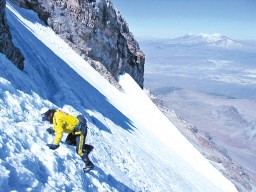 The just concluded Commonwealth Games has for many reasons been in the headlines… the real high of the event was the brilliant performance of the Indian sports persons who with their 101 medals made India proud. Reebok was one of the major suppliers of sportswear to the players at the CWG. It’s very rare to find professional badminton players in Reebok attire unlike tennis, but in CWG it became a topic of discussion. The entire sportswear range by Reebok was designed to be worn outdoors with definitive levels of protection, reinforcement and ventilation wherever necessary. Indeed sportswear is today more than just a ‘garment’…
The just concluded Commonwealth Games has for many reasons been in the headlines… the real high of the event was the brilliant performance of the Indian sports persons who with their 101 medals made India proud. Reebok was one of the major suppliers of sportswear to the players at the CWG. It’s very rare to find professional badminton players in Reebok attire unlike tennis, but in CWG it became a topic of discussion. The entire sportswear range by Reebok was designed to be worn outdoors with definitive levels of protection, reinforcement and ventilation wherever necessary. Indeed sportswear is today more than just a ‘garment’…
The sportswear industry is an immensely important category within the US and European retail markets, which is slowly and steadily entering other countries too inviting sustained advancement in new and innovative technical fabrics. In India the Government has finally recognized the importance of clothing in active sports which helps in breaking seconds barriers. In a recent development it has allowed the duty free import of sportswear, a good beginning to better performances.
Wearers of sportswear increasingly want special properties like moisture management, breathability, easy stretch, anti-microbial treatments and soft hand feel to stay dry and comfortable during a workout. As the demand for higher performances increase, developments of more functional properties for happier and healthier bodies also increase.
Companies like DuPont, American Fibres and Yarns (AF&Y) and Gore-Tex are constantly researching to improve performance of fabric that goes into the making of performance sportswear. Temperature and moisture management are the two key features that all sportswear manufacturers aim to achieve. “The 1980s was an interesting period which saw the development of simple micro fibres and coated fabrics, variants of which have met the needs of many sports garments. However, with evolving needs the developments have moved from very simple micro fibres to much more complex fabrics, effectively used in active sportswear,” remarks Sanjay S. Choudhari of the Synthetic & Art Silk Mills Research Association, Mumbai.
Manmade fibre is most desirable option for sportswear as it can be moulded to any level of performance. In managing sweat in active sports, while some textile manufacturers claim that moisture absorbency and breathability of the fibre is important and hence cotton or viscose is a necessary component for the sportswear, others say that fibres in these garments should not absorb moisture, so that moisture or perspiration is whisked away from the skin to outer layers of clothing from whence it can evaporate into the atmosphere. However, a lot depends on the degree of activity contemplated.
[bleft]Reebok’s NFL Equipment Cold Weather Mock is 88% Play Dry™ polyester/12% spandex top is engineered with a double-sided fabric that disperses heat from warmer areas of the body to help regulate the body temperature. It features flat lock stitching that creates a seamless feel and decreases the chance of chafing and irritation. The Play Dry™ fabric offers ultimate moisture management to keeps the wearer dry and focused on the game, not on the sweat. [/bleft]
“As against cotton, synthetics are generally preferred in clothing for active sports as they do not retain moisture and this has the advantage of keeping garments lighter than the cotton ones when it is wet. Also synthetic fibres have some added advantage of quick dry and good shape retention property. Most of the modern textile materials use the basic idea of capillary action for sweat absorption and fast drying,” avers Sanjay.
Though India is emerging as one of the major converting hubs, it still has to go a long way to go to weave such complicated synthetic fabrics and most of the synthetic fabrics have to be imported majorly from Taiwan and China. “Woven sportswear is mostly synthetic base which requires skilled workers to handle and since these fabrics have never been India’s strength there is a constraint,” admits Gokal Chitranjan, LT Karle.
Woven fabrics is the most preferred choice in sportswear as the warp and weft yarns is interlaced in various ways for different structures and applications. Mechanical and physical properties of woven fabrics, which are especially important for sportswear, depend on type of raw materials, type and count of warp and weft yarns, yarn density and the type of weave structure. “The strength of the woven fabric is the highest in warp and weft direction. While in bias, the fabrics show lower mechanical and physical properties, higher elasticity and lower shear resistance,” avers Amit Aneja, a textile technologist.

The dire requirements of sportswear are fabric area density and cover factor affecting strength, thickness, stiffness, stability, porosity, filtering quality and abrasion resistance of fabrics. The most universal structures used in sportswear are twill and satin weave using various ratios of carbon fibre (common name used to refer to plastic reinforced by a graphite textile; the plastic typically used is epoxy. This fibre is very expensive, but has a fantastic weight-to-strength ratio). In fact, in order to increase the mechanical and physical properties, a different ratio of carbon fibre is constructed using the previous structures as a base.
Twill is a weave that produces diagonal lines on the face of a fabric. The direction of the diagonal lines along the warp direction can be from upwards to the right or to the left making ‘Z’ or ‘S’ Twill. “Compared to plain weave of the same cloth parameters, twills have longer floats, fewer intersections and a more open construction for greater comfort,” adds Aneja.
Higher Performance Fibres & Yarns
[bleft]The most universal structures in sportswear are twill and satin weave using various ratios of carbon fibre This fibre is very expensive, but has a fantastic weight-to-strength ratio[/bleft]
With the growing demands on performance levels in sportswear, methodologies to acquire better properties and finishes are increasingly technology-driven. Moisture management yarn, anti-bacterial yarn, moisture wicking yarn, thermoregulation polyester yarn, linen like yarn, far infrared yarn, recycled polyester staple fibre, anti-pilling fibre, eco-friendly polyester, viscose staple fibre, high shrinkage polyester are now being preferred by the leading international sportswear brands.
Thomas Sosa, Country Manager, Gear for Sports feels that India is lacking in high performance finishes including washed finishes which is currently in fashion within sportswear. However, Ludhiana is emerging as a knitting centre for plain interlock polyester fabrics which are given finishes like Clima Cool and Clima Lite. Supreme Texmart, Ludhiana, Gupta Exim, Faridabad and SVG, Mumbai are some nominated suppliers for fabrics to Adidas. The company works closely with these mills to develop fabrics and specialized finishes as per global standards in perspiration and body temperature control. Blends with lycra are used mostly for women’s wear.
“The new developments are in hydrophilic fabrics and mesh panel constructions,” informs Venkat Chaudhary, Fabric Sourcing Division, Adidas. Adidas leaves no decision in the hands of the vendors and everything from the spec sheet to the quality and testing is being monitored closely. “Polyester Fleece from Ludhiana is being used by many mass sportswear brands,” confirms Sosa. According to Roshan Baid, Paragon Apparels, a nominated supplier to Adidas, India’s niche is cotton and cotton blended offerings, mostly knitted garments like tracksuits used in active wear.
Functional Insulation Sportswear Fabrics
The sportswear companies are constantly doing their R&D into the construction of sportswear fabrics and factors associated with it. Thermo-regulation polyester yarn is the latest addition in sportswear. “People tend to associate the word ‘thermo’ only with heat. But, it is actually maintaining the body temperature to the level that will maximize performance and comfort while protecting the user,” says Venkat. In reality, Thermo-regulating fabrics are combination of fabric construction and chemical finishes keeping body heat within an optimum temperature range called the ‘thermoneutral zone’ (usually set at 37 degrees C +/- 1 degree) meaning warmer or cooler as the need may be.
Typically, fabrics do not inherently provide thermo-regulation. In order to thermo-regulate effectively, fabrics must not inhibit the thermo-regulation efforts of the body itself. “When a fabric thermo-regulates, it will allow air to circulate around the body, and at the same time provide a cushion of insulation (either hot or cold) when the body needs it,” states Yatish Pandey, Managing Director, Texperts, Mumbai, a company which trades in high-performance fibres and yarns.
It is a must for sportswear designed for cold-weather to address both radiant heat loss (through the use of infrared reflective materials and insulative materials) and convective heat loss (through a wind barrier).
On the other hand, warm weather garments must aid evaporative heat loss by increasing moisture movement, and increasing the velocity of heat conduction through thermally conductive materials.
The developments in body temperature management produced for cold environment have resulted in very wearable sportswear which is light-weight and without undue bulk; the garment is adapted to keep the wearer warm, dry and comfortable. It is fabricated of a composite fabric that includes a vapour-permeable laminate formed by a core layer of hollow fibres acting as a thermal blanket sandwiched between inner and outer skins. Both faces of the inner skin and the inside face of the outer skin are metallized to render them reflective, whereas the outside face of the outer skin is blackened to render it absorbent of solar energy.






